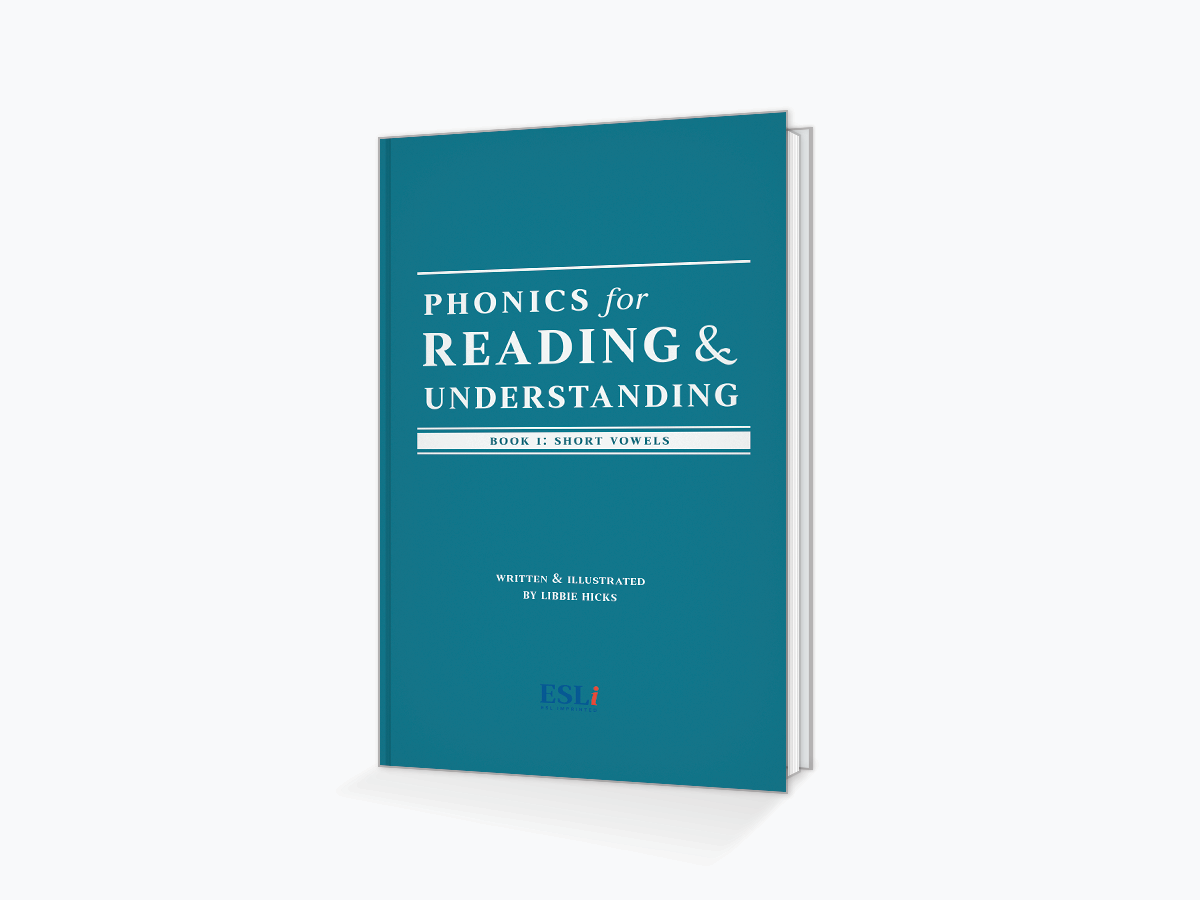Phonics for Reading & Understanding Series
Book 1 is for beginners who either cannot read in any language or who have no familiarity with the letters and alphabetic principle of English. Its purpose is to teach, one by one, each of the short vowels, along with the consonant sounds (without letter names at first) and the skill of blending the one with the other, to sound out words. Units 1 to 5 follow this sequence:
Part 1 of each unit consists of (1) introduction of a short vowel; (2) introduction of several consonant sounds, a few at a time; (3) Practice exercises for associating the letter with the picture that represents its sound; and (4) sound-blending practice (with the audio component), for example, “ă, mmmmă, ma t, mat.”
Part 2 of each unit consists of “Word and sentence exercises” to practice reading words and sentences by applying the skills learned. Unit 6 (the final unit) is dedicated to the alphabet, taught, with letter names and sounds, in sequence, after the students have assimilated the short vowels and the sounds of the 21 consonants.
Book 2 starts with eleven lessons for reading short-vowel words and sentences, then proceeds to teach and contrast the long vowel words with short vowel words (highlighting the long-vowel diagraphs ee, ea; oa, ai, ay; long a, i, o, u with final e, and ending with a review unit. Although this is the second book in the series, it was written first, and for good reason. TMany older students in literacy programs -- even ESL programs -- have some familiarity with the Roman alphabet and with its vowels, though they are unlikely to have mastered the long and short sounds and the spelling patterns that govern them. For such students, starting with the short vowels and, soon after, the long vowels (the names of the letters a, e, i, o, and u) and their patterns will jump-start the decoding skills that lead to independence in reading.
Book 3: Special Vowel Sounds, Diphthongs, and Consonant Combinations
Book 3 is more challenging than either 2 or 1, since it introduces diphthongs and diagraphs –oy, –er, –ow, aw, oo — as well as consonant combinations like st, sm, pr, and others. Each lesson introduces a phonetic element, then a word-reading exercise to practice applying it, and then a sentence-reading exercise to reinforce the sound pattern and also teach comprehension. In Book 3 the students are introduced to many of those sound/spelling patterns that tend to confuse: those exemplified above and others, including the long-i igh, the ending -tion, and other potential stumbling blocks that often interfere with with students’ progress in quickly deciphering unfamiliar words.
Phonics for Reading and Understanding is a three book series of beginning literacy workbooks. These books provide systematic practice in reading English, including:
All three workbooks contain a detailed “To the Teacher” section with both general literacy instructions and special instructions for use with ESL students. In addition, each unit contains (1) the introduction of the phonetic element in question — e.g., short a or the diphthong ou – then (2) several word-reading exercises, wherein the students must sound out words and write them by a picture, (3) several sentence-reading exercises, in which the students must read sentences, understand them, and choose the picture that they illustrate, and (4) at least one word-completion exercise: a type of review that requires the students to intuit which vowels are missing from words.
These practice exercises are the building blocks by which the students attain an automatic, intuitive ability to decode and understand written English. The books can be used with adults, youths, or children, but they have been particularly successful in teaching vocabulary, phonemic awareness, pronunciation, and basic reading to low-beginning English-as-a-second language students in their teens, twenties, and even forties.
Systematic phonics instruction is a missing yet needed ingredient for many students, who often wade confusedly through a maze of inscrutable English vowel combinations, assuming that there is no rhyme or reason to it all. Mastery of the regular sound patterns of English is the goal of this series: for beginning students to acquire the tools for greater independence in reading, and ultimately using, English.
NOTE: Phonics for Reading and Understanding may be used prior to the introduction, Run to the Bus: An Adult ESL Primer, or as a companion to it.




